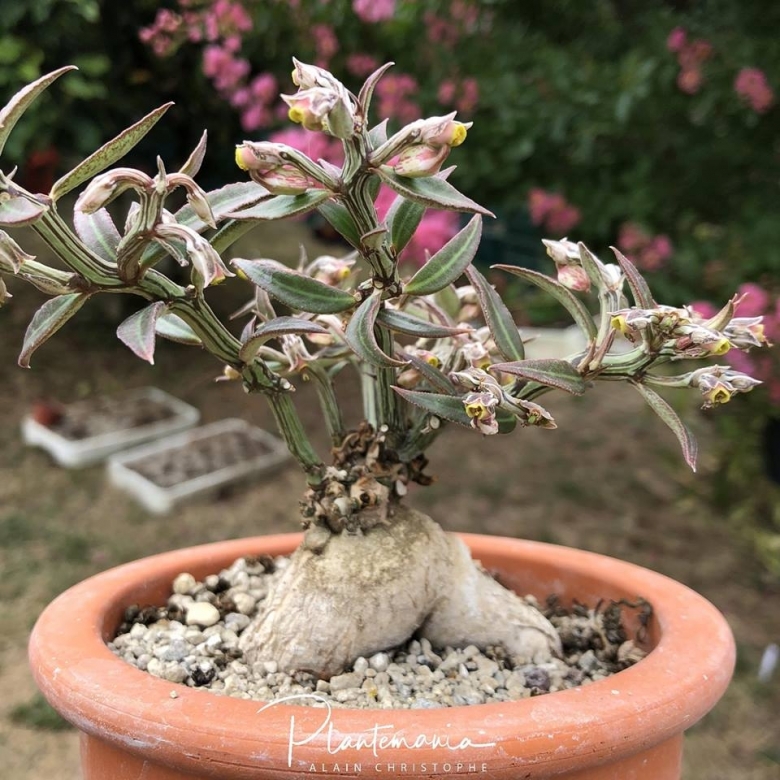Accepted Scientific Name: Euphorbia neomontana Bruyns

Monadenium montanum (Euphorbia neomontana) Photo by: © Plantemania
Origin and Habitat: Tropical East Africa: Southern Kenya, Northern Tanzania.
Altitude range: 1000 -1500 metres above sea level.
habitat and ecology. Monadenium montanumSN|29540]]SN|29540]] grows in grasslands with scattered Acacia bushland between gneiss rocks.
Synonyms:
Description: Monadenium montanumSN|29540]]SN|29540]] is a perennial succulent herb that belong to that elite group of geophytes with the rhizome or caudex below ground in nature. It produces branched stems looking like a colony of twisting, snakes and succulent obovate leaves mottled in purple.
Roootstock (caudex): Solitary underground 2(-13) centimetres thick.
Branches: Few (1-3), erect to to 10-15 cm high or occasionally decumbent, 4.5-5 mm thick, cylindrical, rarely branching, often minutely scabrid and short living.
Roots: Tuberous to 2 cm in diameter.
Leaves: Alternate, ascending, sessile, fleshy, scabrid, elliptical to obovate, 24-44 mm long, 6-25 mm wide entire, purplish mottled. Apex pointed pointed, base cuneate. Stipules minute.
Inflorescences (cymes): 1- to 2-forked in the leaves axils, bearing a solitary involucre. Peduncles fleshy up to 20-35 mm tall.
Bracts cup: About 4.5 mm long, 4 mm broad, dividing into two divergent bracts shaped like the hull of a boat, lobes acute, white to pink-tinged, midribs white. Margin entire fleshy.
Flowers (cyathia): 4.5 long, and 3.5 mm broad. Nectar-glands rim 1.5 mm long. Ovary with 3-lobed styles 2.5 mm in diameter. The styles are separated from the base, 1 mm long, bilobate and thickened at the apex.
Fruits (capules): Trilobate, acutely lobed, 5 mm long, 4.2 mm wide, not keeled. Pedicel to 5 mm.
Seeds. Oblong, 3 mm long,1.5 mm broad, smooth, light brown, caruncle present.
Bibliography: Major references and further lectures
1) Peter R. O. Bally, “The Genus Monadenium: With Descriptions of 21 New Species” Benteli, 1961
2) Urs Eggli, "Illustrated Handbook of Succulent Plants: Dicotyledons" Springer Science & Business Media, 2002
3) P.R.O.Bally, Candollea 17: 28 1959
4) African Plant Database (version 3.4.0). Conservatoire et Jardin botaniques de la Ville de Genève and South African National Biodiversity Institute, Pretoria, "Retrieved [22-08-2018]", from <http://www.ville-ge.ch/musinfo/bd/cjb/africa/>.











